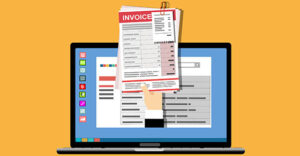
These days, most businesses have websites. But surprisingly, the IRS hasn’t issued formal guidance on when website costs can be deducted.
Fortunately, established rules that generally apply to the deductibility of business costs provide business taxpayers launching a website with some guidance as to the proper treatment of the costs. Plus, businesses can turn to IRS guidance that applies to software costs.
Hardware versus software
Let’s start with the hardware you may need to operate a website. The costs fall under the standard rules for depreciable equipment. Specifically, once these assets are operating, you can deduct 100% of the cost in the first year they’re placed in service (before 2023). This favorable treatment is allowed under the 100% first-year bonus depreciation break. Note: The bonus depreciation rate will begin to be phased down for property placed in service after calendar year 2022.
In later years, you can probably deduct 100% of these costs in the year the assets are placed in service under the Section 179 first-year depreciation deduction privilege. However, Sec. 179 deductions are subject to several limitations.
For tax years beginning in 2022, the maximum Sec. 179 deduction is $1.08 million, subject to a phaseout rule. Under the rule, the deduction is phased out if more than a specified amount ($2.7 million for 2022) of qualified property is placed in service during the year.
There’s also a taxable income limit. Under it, your Sec. 179 deduction can’t exceed your business taxable income. In other words, Sec. 179 deductions can’t create or increase an overall tax loss. However, any Sec. 179 deduction amount that you can’t immediately deduct is carried forward and can be deducted in later years (to the extent permitted by the applicable limits).
Similar rules apply to purchased off-the-shelf software. However, software license fees are treated differently from purchased software costs for tax purposes. Payments for leased or licensed software used for your website are currently deductible as ordinary and necessary business expenses.
Software developed internally
If, instead of being purchased, the website is designed in-house by the taxpayer launching the website (or designed by a contractor who isn’t at risk if the software doesn’t perform), for tax years beginning before calendar year 2022, bonus depreciation applies to the extent described above. If bonus depreciation doesn’t apply, the taxpayer can either:
- Deduct the development costs in the year paid or incurred, or
- Choose one of several alternative amortization periods over which to deduct the costs.
For tax years beginning after calendar year 2021, generally the only allowable treatment will be to amortize the costs over the five-year period beginning with the midpoint of the tax year in which the expenditures are paid or incurred.
If your website is primarily for advertising, you can currently deduct internal website software development costs as ordinary and necessary business expenses.
Paying a third party
Some companies hire third parties to set up and run their websites. In general, payments to third parties are currently deductible as ordinary and necessary business expenses.
Before business begins
Start-up expenses can include website development costs. Up to $5,000 of otherwise deductible expenses that are incurred before your business commences can generally be deducted in the year business commences. However, if your start-up expenses exceed $50,000, the $5,000 current deduction limit starts to be chipped away. Above this amount, you must capitalize some, or all, of your start-up expenses and amortize them over 60 months, starting with the month that business commences.
We can help
We can determine the appropriate treatment of website costs. Contact us if you want more information.
© 2022
These days, most businesses have websites. But surprisingly, the IRS hasn’t issued formal guidance on when website costs can be deducted.
Fortunately, established rules that generally apply to the deductibility of business costs provide business taxpayers launching a website with some guidance as to the proper treatment of the costs. Plus, businesses can turn to IRS guidance that applies to software costs.
Hardware versus software
Let’s start with the hardware you may need to operate a website. The costs fall under the standard rules for depreciable equipment. Specifically, once these assets are operating, you can deduct 100% of the cost in the first year they’re placed in service (before 2023). This favorable treatment is allowed under the 100% first-year bonus depreciation break. Note: The bonus depreciation rate will begin to be phased down for property placed in service after calendar year 2022.
In later years, you can probably deduct 100% of these costs in the year the assets are placed in service under the Section 179 first-year depreciation deduction privilege. However, Sec. 179 deductions are subject to several limitations.
For tax years beginning in 2022, the maximum Sec. 179 deduction is $1.08 million, subject to a phaseout rule. Under the rule, the deduction is phased out if more than a specified amount ($2.7 million for 2022) of qualified property is placed in service during the year.
There’s also a taxable income limit. Under it, your Sec. 179 deduction can’t exceed your business taxable income. In other words, Sec. 179 deductions can’t create or increase an overall tax loss. However, any Sec. 179 deduction amount that you can’t immediately deduct is carried forward and can be deducted in later years (to the extent permitted by the applicable limits).
Similar rules apply to purchased off-the-shelf software. However, software license fees are treated differently from purchased software costs for tax purposes. Payments for leased or licensed software used for your website are currently deductible as ordinary and necessary business expenses.
Software developed internally
If, instead of being purchased, the website is designed in-house by the taxpayer launching the website (or designed by a contractor who isn’t at risk if the software doesn’t perform), for tax years beginning before calendar year 2022, bonus depreciation applies to the extent described above. If bonus depreciation doesn’t apply, the taxpayer can either:
- Deduct the development costs in the year paid or incurred, or
- Choose one of several alternative amortization periods over which to deduct the costs.
For tax years beginning after calendar year 2021, generally the only allowable treatment will be to amortize the costs over the five-year period beginning with the midpoint of the tax year in which the expenditures are paid or incurred.
If your website is primarily for advertising, you can currently deduct internal website software development costs as ordinary and necessary business expenses.
Paying a third party
Some companies hire third parties to set up and run their websites. In general, payments to third parties are currently deductible as ordinary and necessary business expenses.
Before business begins
Start-up expenses can include website development costs. Up to $5,000 of otherwise deductible expenses that are incurred before your business commences can generally be deducted in the year business commences. However, if your start-up expenses exceed $50,000, the $5,000 current deduction limit starts to be chipped away. Above this amount, you must capitalize some, or all, of your start-up expenses and amortize them over 60 months, starting with the month that business commences.
We can help
We can determine the appropriate treatment of website costs. Contact us if you want more information.
© 2022





